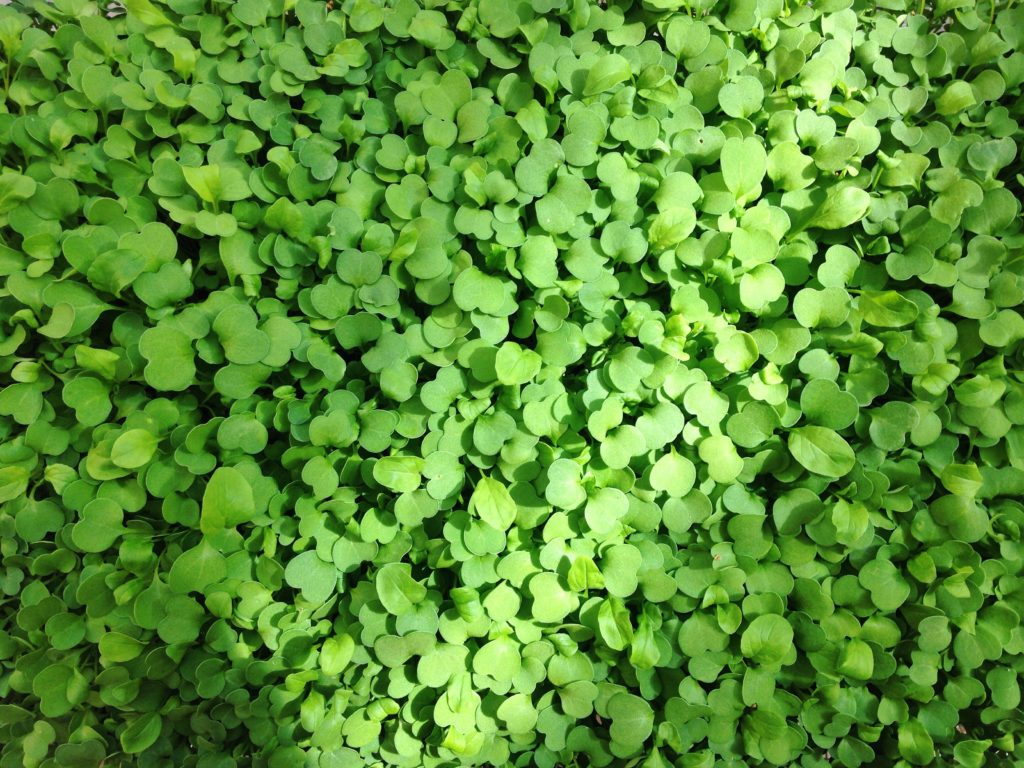What are microgreens and why should you eat them?

With delicate stems and tiny leaves, microgreens are often found sprinkled on salads and stuffed in artisanal burgers. They quickly jazz up a dish, adding a little extra flavor, color and texture. But what are microgreens really?
Simply put, microgreens are edible shoots of plants that are harvested early in life, just after the first leaves have developed.
“Because they’re so young, they’re packed with a lot of nutrients and flavor,” said Pamela Hargest, a horticulture professional with the University of Maine Cooperative Extension.
Hargest leads workshops on how to grow microgreens, and she used to grow a wide variety of them commercially.
“My personal favorite is sunflower shoots because the flavor is a little surprising,” Hargest said. “They’re a little nutty and have a unique texture, being a little succulent.”
Popular varieties of microgreens
Microgreens are grown from the seeds of many common vegetables and other edible plants, such as sunflowers and wheat.
“Usually ones with a lot of flavor are the most popular — things like lemon basil and red vein sorrel,” Hargest said.
Other plants that produce popular microgreens are radish varieties, cabbage, carrot, fava beans, and certain salad greens, such as arugula, mustard greens and kale. In addition, many herbs are grown as microgreens, including mint, cilantro, chives, dill, parsley and basil.
The taste often echoes the taste of the adult plant.
“Our pea shoots taste like peas,” said Patrick Lewis, co-owner of Sprout House Microgreens in Falmouth, Maine. “Our rambo radish microgreens taste the same as a radish.”
The health benefits of microgreens
Established in January of 2018, Sprout House Greenhouse currently grows five varieties of microgreens. In addition to peas and Rambo radish, the small company grows daikon radish, broccoli and sunflower microgreens.
“We stuck with those five because they’re very nutritious,” Lewis said. “We want people to know that they’re good for you.”
One of the major selling points for these miniature greens is that they’re packed with nutrients, a claim that is backed by a 2012 study by researchers from the University of Maryland and the U.S. Department of Agriculture. The study tested 25 commercially available microgreens and found that “compared with the nutrient concentrations in mature leaves recorded in USDA National Nutrient Database, microgreens possessed higher nutrient density.”
But it’s not quite that simple.
The study also found that different microgreens provided “extremely varying amounts of vitamins and carotenoids.” Of the varieties tested, red cabbage, cilantro, garnet amaranth and green daikon radish had the highest concentrations of nutrients.
This study, and the charts on microgreen nutrition that it produced, is heavily referenced by microgreen growers when educating the public and making decisions about which microgreens to grow.
What can you do with microgreens?

While microgreens are often thought of as just garnish, they’re so much more. One of the most common uses is in salad, and not just dusted on the top, but as a major component.
Microgreens can also be used to add texture and flavor to a sandwich, wrap or burger. And they’re a great way to add a green topping to pizza, pasta, crostini, steak and more.
“Some people juice them,” said Lewis. “We have a juice bar that just started making juice with pea shoots and sunflower [microgreens].”
For breakfast, microgreens are often tossed in omelets or on top of eggs. And in an online resource entitled “52 Microgreen Recipe Ideas” by Microgreens Farmer, uses also include combining them with sushi and stir fry dishes, blending them into sauces and sprinkling them onto baked potato and fish.
Whatever recipe you add microgreens to, keep in mind that they are generally best raw. When cooked, the greens tend to lose their crunchy texture and flavor. However, there are some exceptions. Pea shoots, for one, retain much of their shape and flavor when cooked.
Also, you don’t always have to add microgreens to other food. They’re also a great snack, all on their own.
“We’ve found that kids love the sunflower and pea shoots especially,” Lewis said. “You can just eat them by the handful.”

Would like to know more about cultivating microgreens